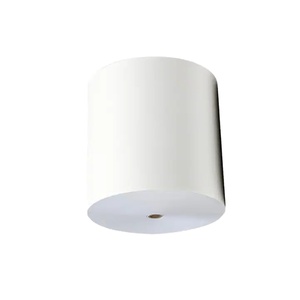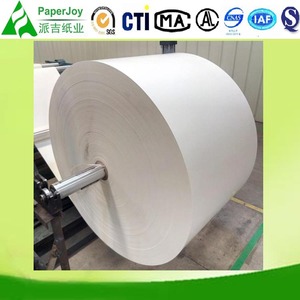(2063 products available)










































































































































































































Gram for gram, 170 gsm paper is relatively heavier than regular paper types. It is not weight and density. Therefore, this kind of paper is common for a variety of uses and comes in several types. Such types include:
Coated Paper
170 gsm coated paper has a smooth and glossy finish. It makes it ideal for printing high-quality images. It is coated with a thin layer of clay, latex, or other materials. Coated paper enhances color reproduction and sharpness.
Uncoated Paper
As the name states, uncoated 170 gsm paper has a rough texture. It is used for everyday printing and writing tasks. This type of paper absorbs ink more than coated paper. It makes it suitable for documents where text clarity is critical.
Recycled Paper
Recycled 170 gsm paper offers a sustainable alternative to consumer paper. It is made from post-consumer waste. It features a slightly rougher texture and sometimes a grayish hue. It is also used for environmental-friendly printing while still maintaining decent weight and quality.
Satin Paper
Satin paper combines a smooth surface with a non-glossy finish. It is a middle ground between coated and uncoated paper. The surface allows for good ink absorption and vivid color display. It reduces glare compared to glossy paper.
Cardstock Paper
This heavy-weight paper is ideal for business cards, postcards, and brochures. It offers durability and a premium feel. Its enhanced stiffness makes it suitable for projects that require both strength and aesthetic appeal.
The design of a 170 gsm paper involves several key elements. They contribute to its performance and versatility in various applications.
Weight and Thickness
170 gsm refers to the paper's weight. A standard sheet measures 1 square meter and has a weight of 170 grams. Consumer paper is relatively heavier than common printing papers. This makes it thicker and denser than them. Most consumers often note its touch and feel. In simple terms, it offers a sturdier and more durable finish.
Texture
Depending on the type, 170 gsm paper comes with a variety of textures. They are often either smooth or have a slight texture. Smooth paper is often ideal for high-resolution images. Alternatively, textured paper adds a tactile dimension to prints. They also enhance depth to printed designs.
Finish
170 gsm paper incorporates various kinds of finish. They include matte, glossy, and satin finishes. Glossy finishes tend to enhance color vibrancy and contrast. They offer a shiny and reflective surface. This makes it ideal for photographs and graphic-intensive materials. Matte finishes provide a non-reflective surface. They offer a more subdued look that prevents glare and fingerprints. It is, therefore, perfect for everything that falls under professional and elegant presentations. Satin finishes combine the features of glossy and matte. They provide a slight sheen with reduced glare. It also adds a smooth feel to the paper.
Whiteness
The whiteness of 170 gsm paper affects its color contrast and brightness. A higher whiteness level normally allows for more accurate color rendering. Henceforth, making colors appear more vivid and sharp. Conversely, lower whiteness provides softer tones. They are putting a more natural aesthetic on the printed images.
Ink Absorption
Commonly referred to as the basis weight, 170gsm paper is designed to absorb the ink well. This prevents ink from bleeding or spreading. This keeps all the prints nice and sharp. Furthermore, it is great for everything from business documents to flyers and postcards. The ink does not bleed nor smear.
170gsm paper is popular due to its versatility. It caters to a variety of personal needs. In this segment, a closer look is taken at some of these scenarios.
Printing Brochures and Flyers
With its sturdiness, 170 gsm paper is ideal for printing brochures and flyers. Its thickness adds a premium feel to promotional materials. This helps businesses make an impression on potential clients' hands. Its glossy finish brings images and graphics to life. All this makes their brochures eye-catching and informative.
Creating Business Cards
Business cards require strength and style in equal measure. Well, 170 gsm paper fits the bill perfectly. Its weight ensures business cards do not bend easily. This achieves a professional look that is durable. Consumers and entrepreneurs alike know these things and so 170 gsm paper cards are essential for making great first impressions.
Art Prints and Posters
Whether for personal decor or retail sales, 170 gsm paper is great for art prints and posters. It does not wrinkle or tear easily. It holds its shape for longer. And, as mentioned before, a glossy finish enhances the colors' vibrancy and clarity. This makes the designs stand out and attract a lot of attention.
Postcards and Invitations
Sweet sixteen or just a birthday bash, 170gsm paper is great for postcards and invitations. Its thickness means that it can withstand mailing without bending or getting damaged. This guarantees every message or invitation arrives in top condition and full glory. Personal users use it for wedding invitations as well.
Presentation Covers and Pamphlets
170 gsm paper is the go-to cover choice for presentations. Its sturdy nature protects slides and materials within during handling and storage. In presentations, the glossy surface boosts the visual quality of the content. This keeps the audience engrossed all through with great visuals. It also works well for pamphlets that require longevity and visual appeal.
Paper specifications and maintenance ensure users get the most aligned print quality, durability, and functionality requirements. Here is how to get the best of 170 gsm paper:
Printer Compatibility
The same goes with 170 gsm paper. Approved printer types include laser, inkjet, and offset. To avoid issues like paper jams and poor print quality, it is vital for users to check their printer's paper weight compatibility. They should also ensure they only use printers that will give them no trouble at all.
Storage Conditions
170 gsm paper should be kept in a cool, dry environment, away from direct sunlight, and at a moderate room temperature. This prevents warping, yellowing, and a build-up of static charge on the paper. One must also ensure it is stored in its original packaging before it is exposed to environmental factors.
Cutting and Trimming
Users should use sharp blades or guillotine cutters on 170 gsm paper to prevent tearing or fraying along the edges. This also ensures clean cuts that are needed for professional finishes. Paper trimmers should also be used carefully to maintain their thickness and weight.
Ink Type
Standard ink absorption means 170 gsm paper is compatible with dye-based and pigment-based inks. However, it is recommended that users perform a print test. This ensures color accuracy and consistency. Especially when using professional-grade digital or offset printers.
Handling Tips
Users should handle this paper with clean, dry hands or gloves to prevent fingerprints or smudges on its surface. They should also avoid bending or folding the paper without using a bone folder. This maintains its integrity and visual appeal, as well as a professional appearance.
Heat Settings
For users with laser printers, they must use appropriate heat settings. This avoids damage to the paper. Excessive heat can warp or scorch the surface of 170 gsm paper. It will, therefore, be important to adjust settings for thicker paper.
Maintenance of Printing Equipment
This is heavy-weight paper. It will require more careful maintenance of the user's printing equipment. They should frequently clean their printer rollers and components. This ensures smooth feeding and prevents smudges or lines on their prints.
This paper is ideal for high-quality prints. They include brochures, flyers, posters, business cards, and art prints. Its thickness enhances professional application of color and durability in important documents and promotional materials.
Standardly, 170gsm paper has a thickness of about 0.14 millimeters or 5.5 mils. Regardless of this standard measurement, variations might exist based on a manufacturer's specific formulation. They will nonetheless ensure effective performance across a range of printing applications.
This paper's sturdy weight gives flyers a professional feel that makes an impression. It also allows for vibrant color printing without the fear of ink bleed or warping. All these refined qualities make flyers to be of the highest quality within and out.
Provided the home printer is compatible with thicker paper weights, it should handle 170gsm paper quite smoothly. Therefore, it is always important to check the printer manual first to see if the paper it requires or has.
Just like any other paper, 170 gsm can be recycled. Users are advised always to adhere to their local recycling guidelines to ensure the paper is properly processed. This will also help minimize the environmental impact.